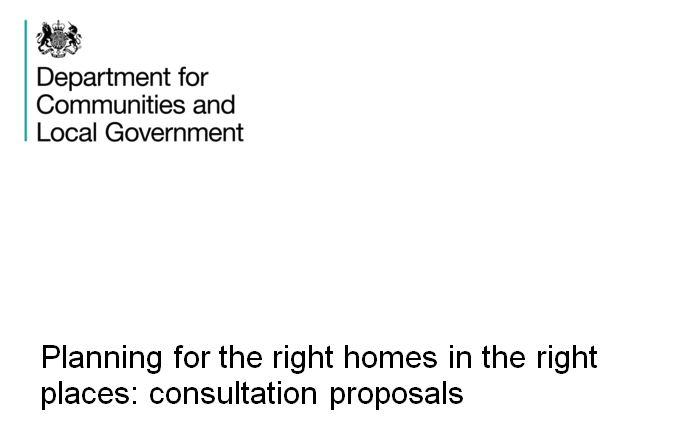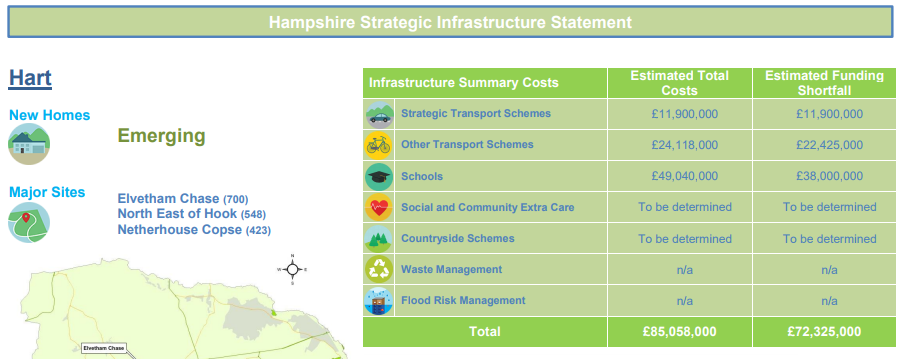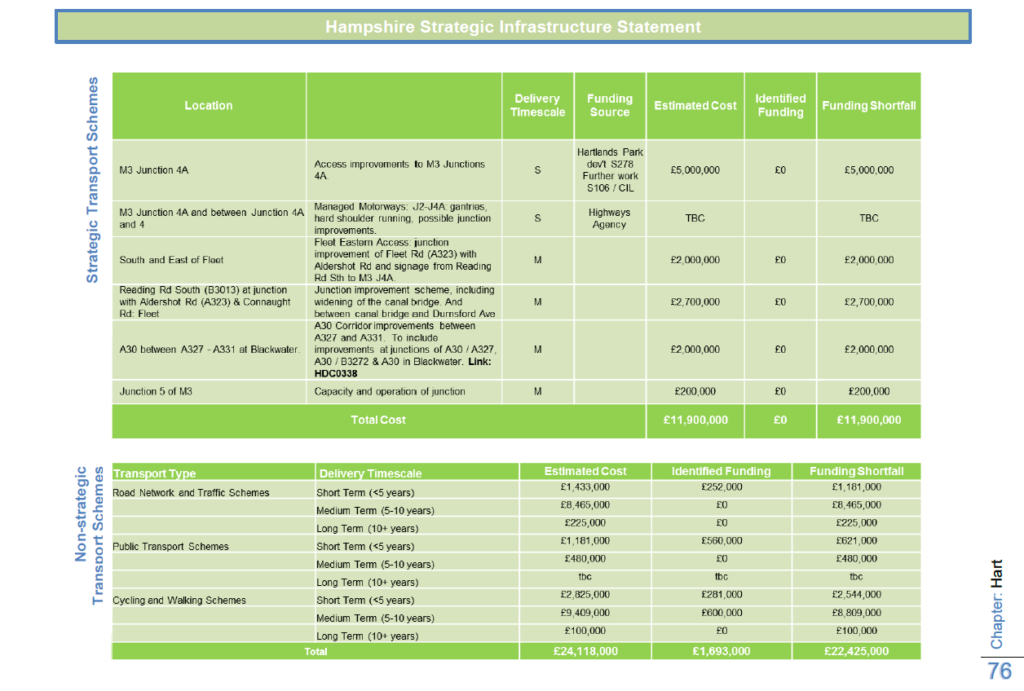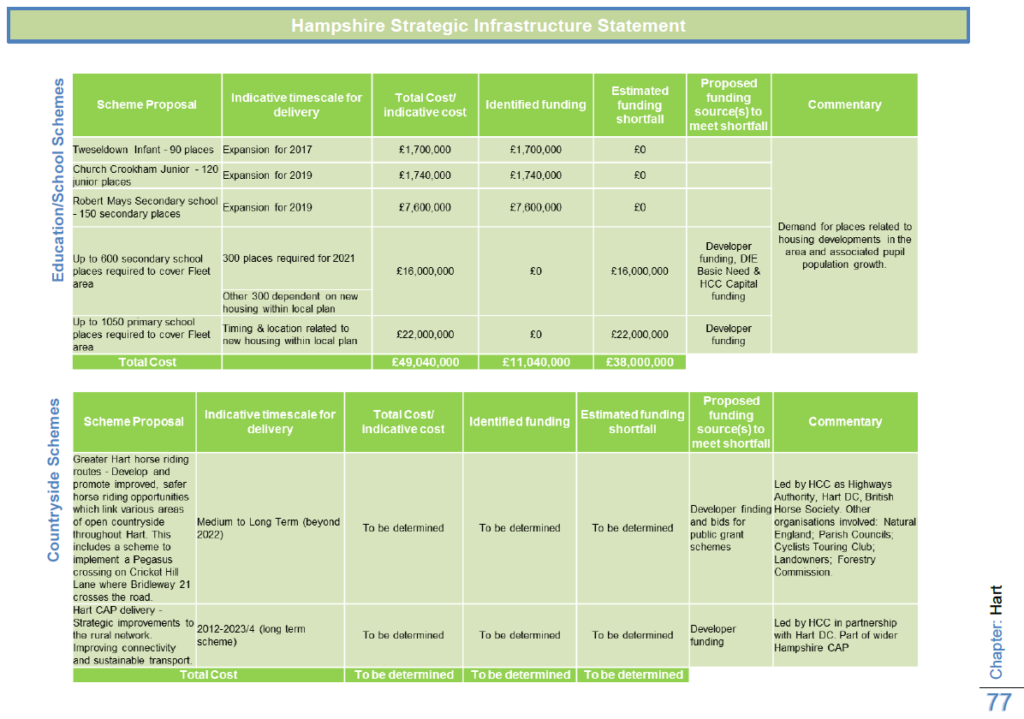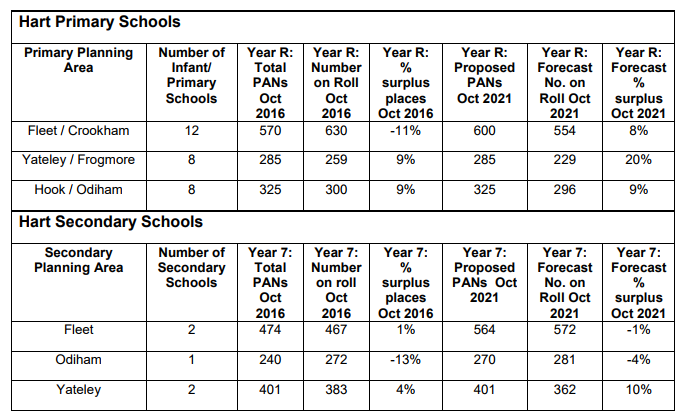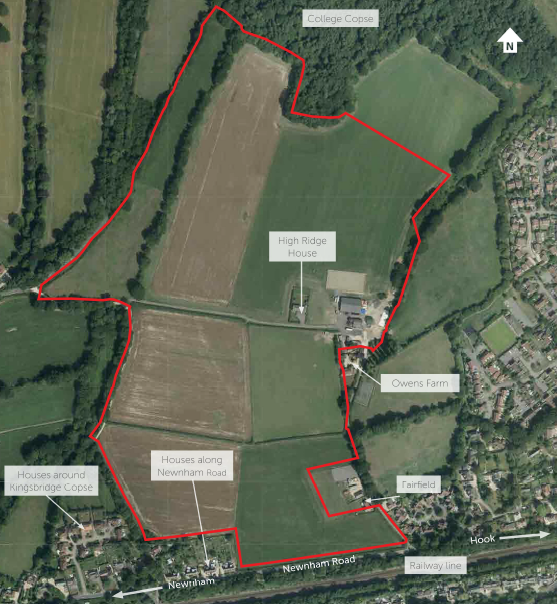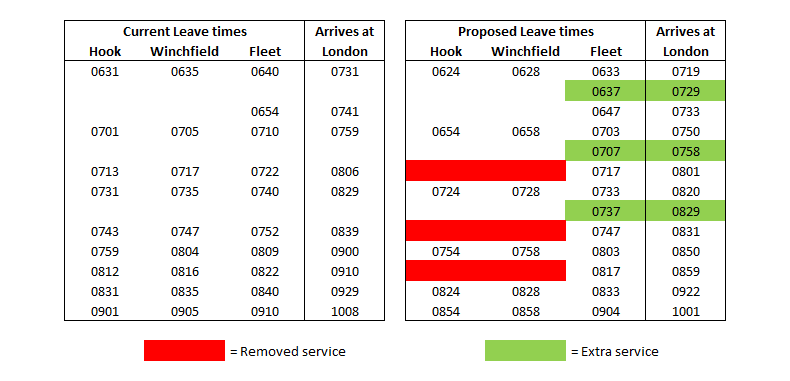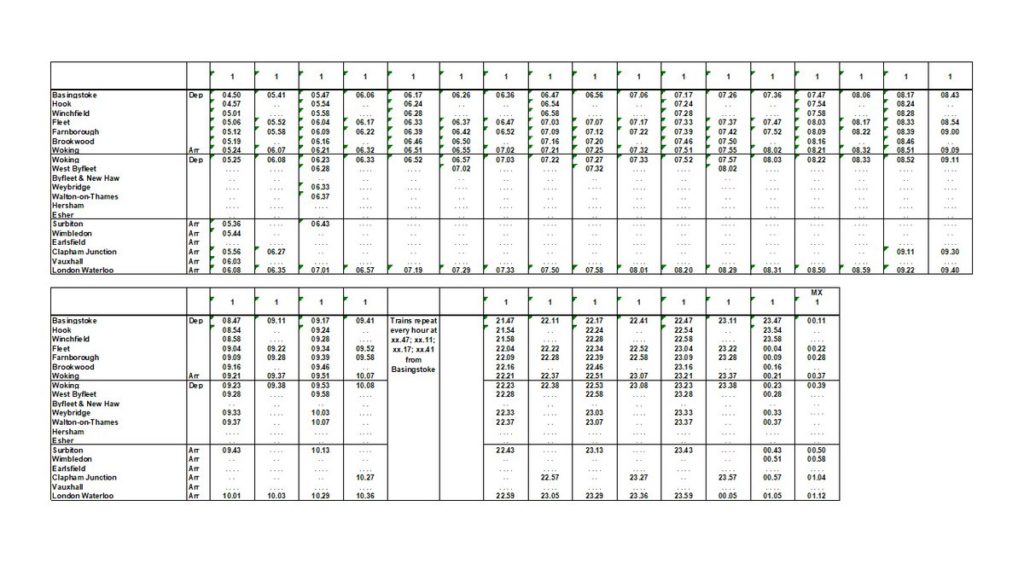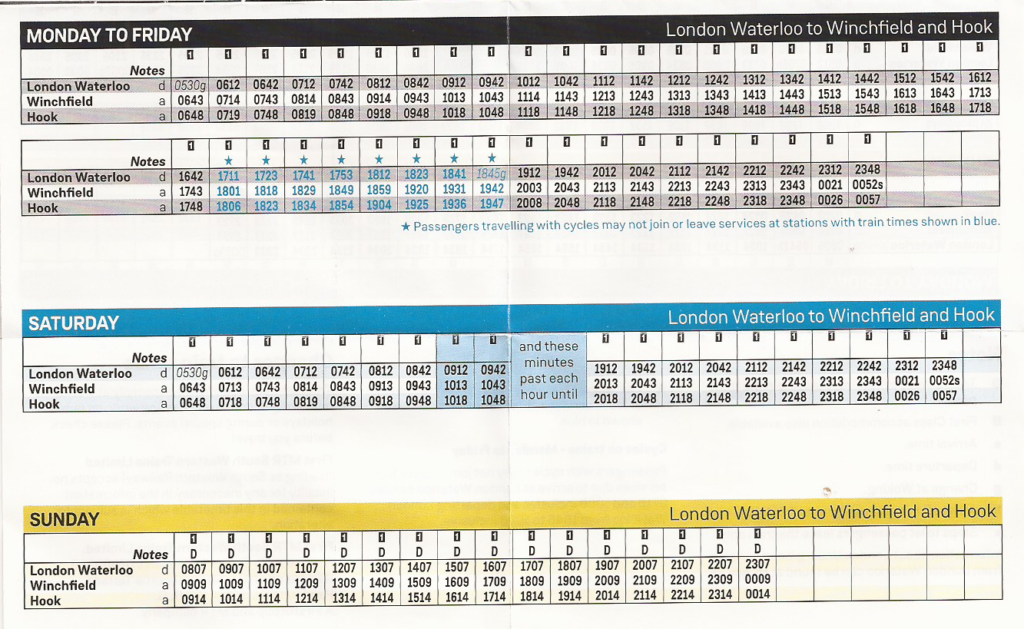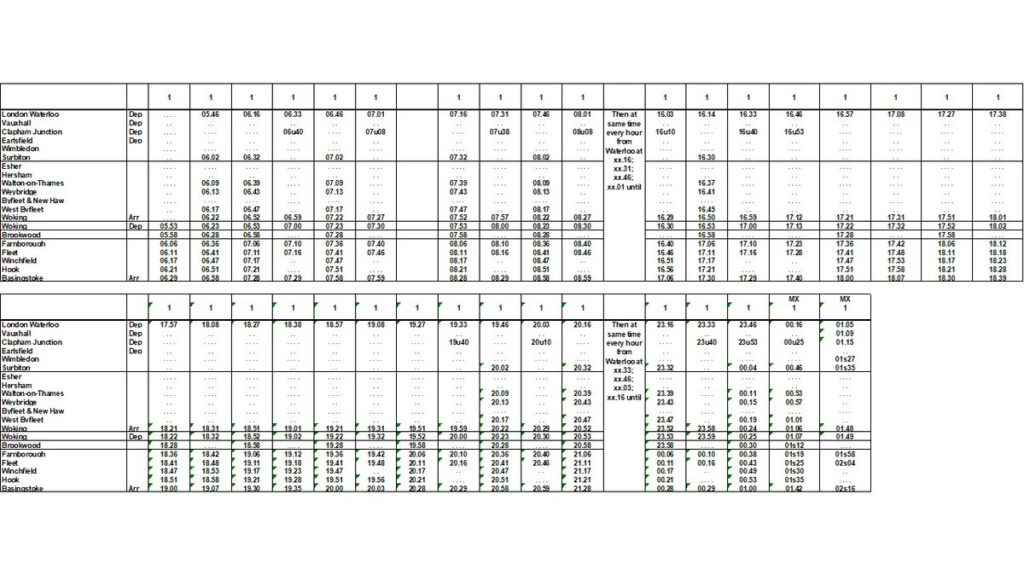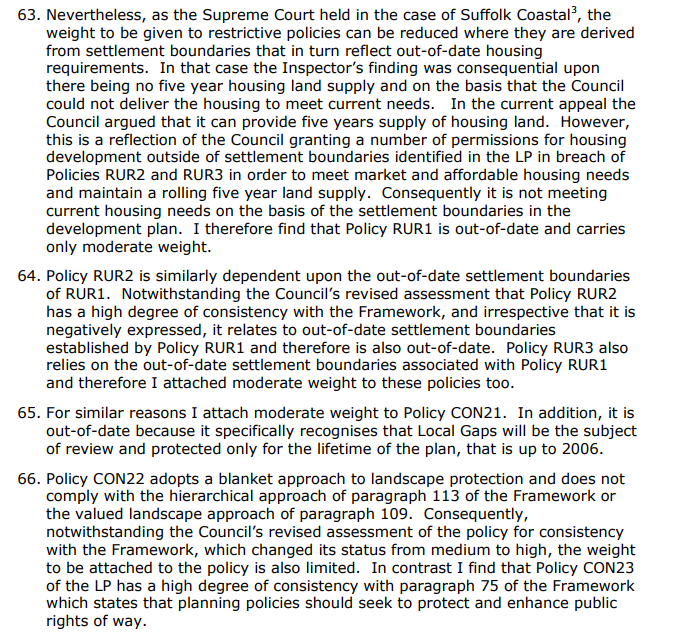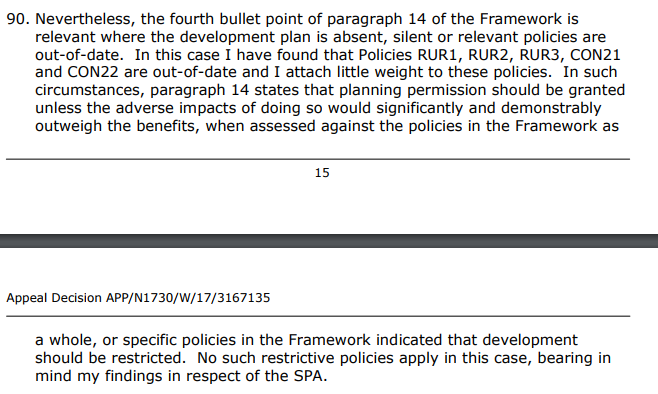Last month, the DCLG consultation (Planning for the Right Homes in the Right Places) was published. These proposals to simplify and standardise the calculation of housing need. The good news is that Sajid Javid’s new methodology, if adopted, will result in a significant reduction in Hart housing need. There are also reductions for Rushmoor and Surrey Heath.
We have now had chance to compile our answers and submit them to the Government. We encourage others to do so too. We understand that there have been howls of protest coming from the boardrooms of the developers, so it is important that the general public make their voice heard to see off this powerful lobby. You can respond to the consultation on the link below, it takes around 10 minutes if you cut and paste our suggested answers.
Full DCLG Consultation document (Planning for the right homes in the right places)
DCLG Consultation response link Deadline 9 November 2017.
Our suggested responses to DCLG Consultation
Question 1 (a): do you agree with the proposed standard approach to assessing local housing need? If not, what alternative approach or other factors should be considered?
Answer: Yes
Comments:
We broadly agree with your proposals. The main strength is that the approach gives local housing targets that add up in total to the national requirements, thus giving a national consistent and coherent approach. This is in stark contrast to our own Hart Local Planning Authority (LPA) which has created a draft Local Plan to build at 485 dpa, compared to this new approach which arrives at a build rate of 292 dpa. The SHMA carries out a number of dubious adjustments to the baseline population forecast to arrive at a target of 382 dpa. The impact of the higher target would be to concrete over many beautiful green fields, and by definition, import people from other districts, many of which will work outside the area, which is quite the opposite of ‘sustainable’ development.
We challenge that nature of the ‘affordable housing’ uplift. First, there is no evidence that building extra houses will result in lower prices. Certainly not on a scale that would make a material difference to affordability. Houses are assets, and high prices are as a result of ultra-low interest rates and QE.
However, we do agree that there is probably a level of suppressed household formation that needs to be dealt with. Almost by definition, these people can’t afford to either rent or buy. Building more open market (or even ‘affordable’ houses at a 20% discount) is not going to help these people. These people need access to social housing at affordable rents. We therefore suggest that the ‘affordable housing’ uplift that you calculate should be delivered in the form of social housing.
Those who are already renting, but want to buy don’t, by definition, need an extra house to be built as they are already housed. What they need is to save for a deposit. However, we don’t support widespread Help to Buy programmes, since these are likely to end up fuelling higher house prices.
We would also suggest the planning horizon is extended to say 15 years, to cover the time horizon of many Local Plans.
We would also suggest that you ask LPAs to break down the housing need into size (e.g. number of bedrooms) and type (e.g. specialist accommodation for the elderly, self-build).
Question 1(b) how can information on local housing need be made more transparent?
Comments:
Ask Local Planning Authorities (LPA) to publish the ONS figures for future population growth in an easily digestible form; publish data on suppressed households and affordability ratios.
It would also be helpful if LPAs were asked to publish data on unimplemented planning permissions, by age since planning permission was granted. There needs to be pressure put upon developers to actually build the houses that have been permitted. A recent House of Lords report indicated that 100,000 fewer homes were being built each year than were being permitted.
Question 2: do you agree with the proposal that an assessment of local housing need should be able to be relied upon for a period of two years from the date a plan is submitted?
Answer: Yes
Comments:
LPAs need a sensible period of stability. Two years sounds about right. It might be desirable to extend it to three years, so LPAs have at least one year’s grace from when new figures are published to adjust their Local Plans accordingly.
Question 3: do you agree that we should amend national planning policy so that a sound plan should identify local housing needs using a clear and justified method?
Answer: Yes
Comments:
The current SHMA process is flawed. Typically, they are produced for a Housing Market Area (HMA) made up of several LPAs. The only consultees are industry insiders who have a vested interest in pushing up the housing numbers in areas that are profitable to develop, but not in line with local needs.
Once a particular Local Plan comes to examination, the developers bring along highly paid consultants and barristers to argue for even higher numbers. The housing target becomes effectively unchallengable because of the impact it would have on other LPA’s in the HMA.
This national approach is consistent and coherent at national and local level. This would have the impact of limiting housing targets to actual local needs and cutting out lots of cost and time from the process which will benefit everybody (except highly paid consultants and lawyers).
Question 4: do you agree with our approach in circumstances when plan makers deviate from the proposed method, including the level of scrutiny we expect from the Planning Inspectors?
Answer: Yes
Comments:
Again, this approach will cut time and cost out of the process and reduce the scope for developers and their advisors to spend thousands trying to push up housing numbers unnecessarily.
Question 5(a): do you agree that the Secretary of State should have discretion to defer the period for using the baseline for some local planning authorities? If so, how best could this be achieved, what minimum requirements should be in place before the Secretary of State may exercise this discretion, and for how long should such deferral be permitted?
Answer: Not sure
Comments:
Question 5(b): do you consider that authorities that have an adopted joint local plan, or which are covered by an adopted spatial development strategy, should be able to assess their five year land supply and/or be measured for the purposes of the Housing Delivery Test, across the area as a whole?
Answer: Not sure
Comments:
Question 5 (c): do you consider that authorities that are not able to use the new method for calculating local housing need should be able to use an existing or an emerging local plan figure for housing need for the purposes of calculating five year land supply and to be measured for the purposes of the Housing Delivery Test?
Answer: Yes
Comments:
There ought to be some sort of maximum deviation from the new method that can be allowed.
Question 6: do you agree with the proposed transitional arrangements for introducing the standard approach for calculating local housing need?
Answer: Yes
Comments:
Your proposals look fine. However, the Table 1 and para 54 are expressed in very complex sentences with complex and/or conditional statements in both the Plan stage definition and transitional arrangements.
For instance, what constitutes ‘publication’ is this Reg 18 or Reg 19 consultation.
It appears as though you wish to implement as quickly as possible, however, you should make the language clearer. In particular, you should make clear what LPAs whose housing targets have gone down compared to the SHMA or draft Local Plan, what housing target to use. This is especially true when the planned submission date is around March or April 2018. You should also commit to a date for publication of the new NPPF.
Question 7(a): do you agree with the proposed administrative arrangements for preparing the statement of common ground?
Answer: Yes
Comments:
The problems you identify around Duty to Cooperate have affected Hart LPA. Their plan was failed at the last moment, on DtC grounds, back in 2013. Since then it has operated without a Local Plan and is subject to speculative applications.
So, being more specific and transparent around what needs to be done to demonstrate cooperation can only be a good thing, and a Statement of Common Ground sounds like a useful tool.
Question 8: do you agree that the proposed content and timescales for publication of the statement of common ground are appropriate and will support more effective co-operation on strategic cross-boundary planning matters?
Answer: Yes
Comments:
Broadly agree, with the following extra suggestions:
It should be possible for LPAs to go to the Inspector at an early stage of the plan making process to get a steer on the draft of their Statement of Common Ground, to avoid it being failed at examination.
There should be defined timelines for SoCG’s to be kept up to date (say every five years) after plans are adopted, as part of the natural plan updating process
Question 9(a): do you agree with the proposal to amend the tests of soundness to include that:
- plans should be prepared based on a strategy informed by agreements over the wider area; and
- plans should be based on effective joint working on cross-boundary strategic priorities, which are evidenced in the statement of common ground?
Answer: Yes
Comments:
Question 9(b): do you agree to the proposed transitional arrangements for amending the tests of soundness to ensure effective co-operation?
Answer: Yes
Comments:
Question 10(a): do you have any suggestions on how to streamline the process for identifying the housing need for individual groups and what evidence could be used to help plan to meet the needs of particular groups?
Comments:
There are already mechanisms for defining the size of houses by number of bedrooms and housing for special needs (e.g. specialist accommodation for the elderly) in the SHMA process. It would be most helpful to use these.
It would also be helpful to identify the quantum of social housing requirements. This could be done by estimating ‘suppressed households, and examining local authority housing waiting lists.
Question 10(b): do you agree that the current definition of older people within the National Planning Policy Framework is still fit-for-purpose?
Answer: Yes
Comments:
Question 11(a): should a local plan set out the housing need for designated neighbourhood planning areas and parished areas within the area?
Answer: Yes
Comments:
However, the total of the neighbourhood planning areas added together should be the same total as the overall LPA. There needs to be safeguards that Neighbourhoods are not forced to build many more houses than the formula you put forward in 10(b) against their will.
Question 11(b): do you agree with the proposal for a formula-based approach to apportion housing need to neighbourhood plan bodies in circumstances where the local plan cannot be relied on as a basis for calculating housing need?
Answer: Yes
Comments:
This approach will effectively force already built up areas to increase density and bring forward brownfield sites for development. This can only be a good thing, as it will:
- Probably decrease average property size, and thus reduce prices making it easier for younger people to get on the housing ladder
- Act as a spur for redevelopment of run down town centres as more people live there, leading to more demand for local shops, cafes, restaurants and cultural venues
- Protect green areas on the fringes of built-up areas as amenity space.
Question 12: do you agree that local plans should identify the infrastructure and affordable housing needed, how these will be funded and the contributions developers will be expected to make?
Answer: Yes
Comments:
The proposals should go further and include a post-hoc analysis of the actual performance of a site in terms of sales revenue and profit achieved by developers. Where this is significantly above the planned revenue and profit in the viability statement, then developers should be mandated to make some of that additional profit available for additional infrastructure contributions to roads, schools, cultural venues etc.
Question 13: in reviewing guidance on testing plans and policies for viability, what amendments could be made to improve current practice?
Comments:
The proposals should include a post-hoc analysis of the actual performance of a site in terms of sales revenue and profit achieved by developers. Where this is significantly above the planned revenue and profit in the viability statement, then developers should be mandated to make some of that additional profit available for additional infrastructure contributions to roads, schools, cultural venues etc.
You might also consider re-adopting Garden City principles where land vendors made contributions to infrastructure. This could be achieved by levying a ‘planning gain’ charge on those who sell agricultural land valued at say £2,000/acre on with planning permission at £2m/acre. This pushes up costs for developers and the land vendors make a large windfall. A levy on this windfall could help fund vital infrastructure.
Question 14: do you agree that where policy requirements have been tested for their viability, the issue should not usually need to be tested again at the planning application stage?
Answer: No
Comments:
The level of viability testing that can be carried out at the plan making stage will be very limited. Moreover, a significant amount of time may pass between the plan being made and the application coming up for determination.
Many things could change in the meantime such as the cost of the land, the number and style of the units proposed on the site, the build costs and the infrastructure requirements of the LPA.
It is therefore appropriate that viability is tested again at the point of application, and again once the site is built out, and it can be seen what level of profit the developer has made.
Question 15: how can Government ensure that infrastructure providers, including housing associations, are engaged throughout the process, including in circumstances where a viability assessment may be required?
Comments:
A good start would be to mandate County authorities to extend their timelines for planning school places. For instance, Hampshire’s school planning goes out to 2021, yet Hart’s Local Plan has to be produced up to 2032. These are clearly misaligned and this issue needs to be fixed.
A similar argument should be applied to authorities responsible for roads and healthcare. They should be able to model the overall impact of extra housing within and across LPA boundaries, and make better, more timely assessments of the additional capacity required. This will enable better arguments to be made to demand higher payments from developers.
Question 16: what factors should we take into account in updating guidance to encourage viability assessments to be simpler, quicker and more transparent, for example through a standardised report or summary format?
Comments:
It should be possible to create a standardised land appraisal model, including land costs, build costs, number of units, average net selling price, overhead costs and CIL/S106 contributions. The sensitivity will be around the discount rate used in any NPV calculation, which will vary developer by developer dependent upon their cost of capital.
However, it should be possible to come up with a baseline solution that most can agree on for assessing viability. But as stated above, this should be revisited at planning application stage and post-hoc after the development has been completed.
The building industry produces average costs for different types of dwellings, land prices house prices are available from the Land Registry.
Question 17(a): do you agree that local planning authorities should set out in plans how they will monitor and report on planning agreements to help ensure that communities can easily understand what infrastructure and affordable housing has been secured and delivered through developer contributions?
Answer: Yes
Question 17(b): what factors should we take into account in preparing guidance on a standard approach to monitoring and reporting planning obligations?
Comments:
It should be for Government to set out a standard data schema in say xml format to be used by all LPAs. This should be machine readable, and be possible to be aggregated and compared across LPAs.
Question 17(c): how can local planning authorities and applicants work together to better publicise infrastructure and affordable housing secured through new development once development has commenced, or at other stages of the process?
Comments:
A public, standard database as described above should be sufficient, together with normal reporting through Council press releases and magazines.
Question 18(a): do you agree that a further 20 per cent fee increase should be applied to those local planning authorities who are delivering the homes their communities need? What should be the criteria to measure this?
Answer: No
Comments:
It seems odd to give extra funding to those LPAs that are performing best, and no extra money to those who aren’t performing. You should let LPAs choose their own fee levels, subject only to the safeguard that they collect no more in fees overall than the costs of the planning department. These levels should not be set by national Government.
Question 18(b): do you think there are more appropriate circumstances when a local planning authority should be able to charge the further 20 per cent? If so, do you have views on how these circumstances could work in practice?
Answer: Not Sure
Comments: See 18a
Question 18(c): should any additional fee increase be applied nationally once all local planning authorities meet the required criteria, or only to individual authorities who meet them?
Answer: Not sure
Comments: See 18a
Question 18(d): are there any other issues we should consider in developing a framework for this additional fee increase?
Comments: See 18a
Question 19: having regard to the measures we have already identified in the housing White Paper, are there any other actions that could increase build out rates?
Answer: Yes
Comments:
A time limit should be set on completion of any site given planning permission. Any units not completed by the end date, should be subject to council tax (perhaps a punitive rate of council tax) to act as an incentive for developers to actually build the homes that have been awarded planning permission.
If say, 12 months after the end date, the homes have still not been completed, then the LPA should have the authority to compulsorily purchase the remains of the site at a knock-down price to be sold on to another developer to complete.
